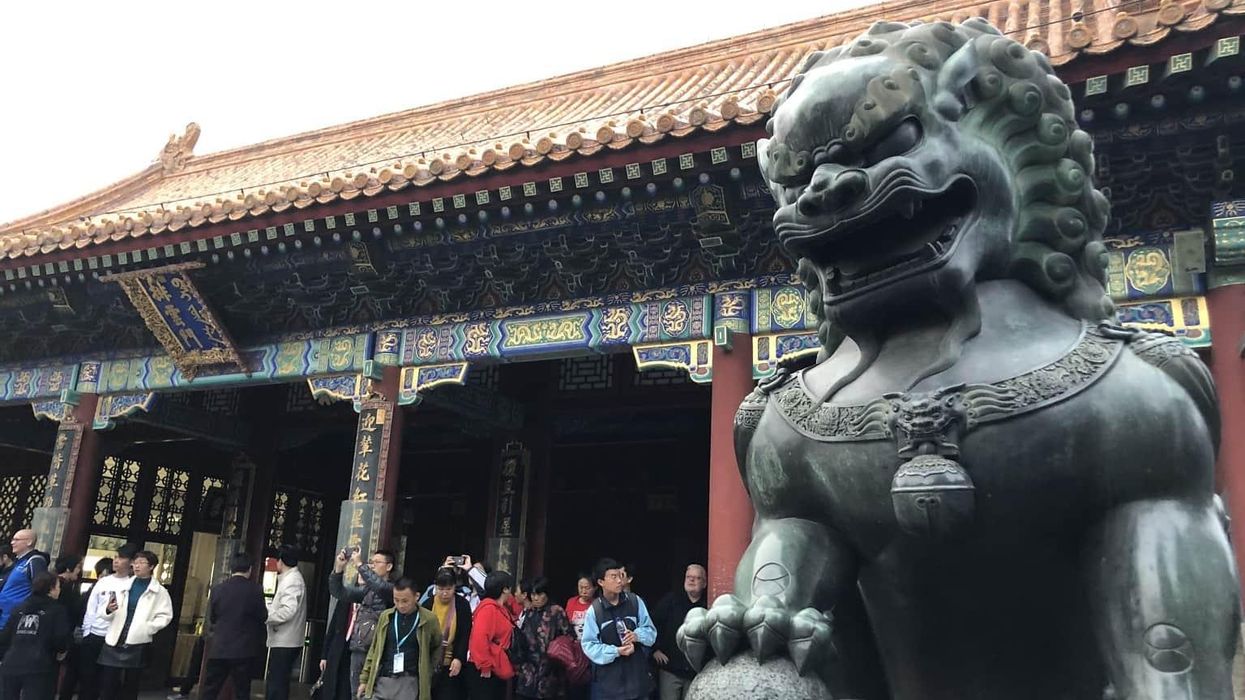Last month, President Biden and Chinese President Xi Jinping spoke about the growing tensions between the two countries and how to ameliorate it. President Biden stressed the “need for common-sense guardrails to ensure that competition does not veer into conflict and to keep lines of communication open,” while President Xi noted that in order for there to be success there must be “mutual respect, peaceful co-existence and win-win cooperation.” Both presidents also expressed willingness to engage in nuclear arms discussions.
Biden and Xi are both correct. What the U.S. and Chinese governments should be focused on is increasing communication, cooperation, and ultimately, trust in order to properly address the growing tensions between the two powers.
Instead, the solution to this problem for both Washington and Beijing has been to throw more money and resources at inflating and modernizing their nuclear arsenals. Multiple missile silo fields have been discovered across the Chinese landscape, and panic reigned supreme after China tested hypersonic missiles that were likened to a “Sputnik moment.” Meanwhile, the United States has been busy allocating endless amounts of money to upgrade its doomsday weapons, and even considering building new ones.
During the Cold War, the United States and the Soviet Union made the same mistake in prioritizing military buildups that did not bridge the growing divide between the two global superpowers, but rather brought the world to the brink of extinction. At that time, the arms race got so bad that there were around 68,000 nuclear weapons between them alone, and way too many nuclear close calls for anyone to be comfortable with.
Now, the United States and China need to stop pointing fingers, bullying, and leading with hypocrisy. Washington cannot in good faith criticize China’s build-up of its nuclear arsenal without acknowledging its own multi-year nuclear weapons modernization program. It is hypocritical to complain that China is planning to build around 1,000 nuclear weapons by 2030 while ignoring the fact that the United States already has three times that amount (plus more in storage) and is upgrading them despite its commitments to work toward complete disarmament under the Nuclear Non-Proliferation Treaty.
Meanwhile, China has to become a team player. The Chinese government cannot claim it is making productive efforts to reduce the nuclear threat when it refuses to negotiate with the United States outside of multilateral settings like the United Nations. Limiting opportunities in which Washington and Beijing can engage in productive discussions on nuclear weapons issues only serves to deepen the divide between them. China increasing its own nuclear arsenal makes it appear that it is moving away from its commitment to a No First Use policy — in addition to disregarding its own commitments to disarmament via the NPT. A public reaffirmation that China is in fact still guided by a No First Use policy would greatly help to alleviate concerns that China’s nuclear buildup is offensive, intended to threaten the United States.
Before we find ourselves again at the precipice of nuclear war (if the U.S.-China relationship continues to trend downward) we need to find alternative solutions to addressing the rising influence of China.
This means the United States and China must do something that they are probably not too familiar with: start building trust. Prioritizing trust and confidence-building measures during the Cold War is what allowed both sides to ease tensions and work together to produce multiple treaties and agreements. It’s what allowed Washington and Moscow to continue friendly cooperation on nuclear risk reduction and arms control efforts.
The Strategic Arms Limitation Talks (SALT I and SALT II) in the 1970s led to the creation and ratification of the Anti-Ballistic Missile Treaty which intended to curb the spiraling arms race. These talks also helped lay the foundation for engaging in additional talks that would eventually lead to New START, the sole surviving arms control treaty between the United States and Russia. Most famously, the Geneva Summit in 1985 held between President Ronald Reagan and Soviet leader Mikhail Gorbachev led to the infamous Reagen-Gorbachev principle that “a nuclear war cannot be won and must never be fought,” while the Reykjavik Summit in 1986 brought the two leaders to the brink of nuclear abolition.
Engaging in trust and confidence building measures like these is what helped to lead us out of the Cold War without a nuclear conflict.
Today, the United States and China are following a similar path toward a Cold War-style arms race. Before we reach a point of no return, both sides should indicate they are willing to offer more than just lip service in regard to nuclear cooperation. A good place to start would be to use the strategic stability groups implemented between the United States and Russia in September to provide a setting for meaningful engagement on nuclear arms control.
The phone call between President Biden and President Xi earlier this month is progress, but there needs to be more sustained dialogue and cooperation between the two states so they can begin the trust-building measures necessary to move forward toward genuine progress. Perhaps then we can embark on a path toward the total elimination of nuclear weapons or at the very least, avoid spiraling deeper into an arms race and toward the brink of a nuclear catastrophe that no one will win.
















